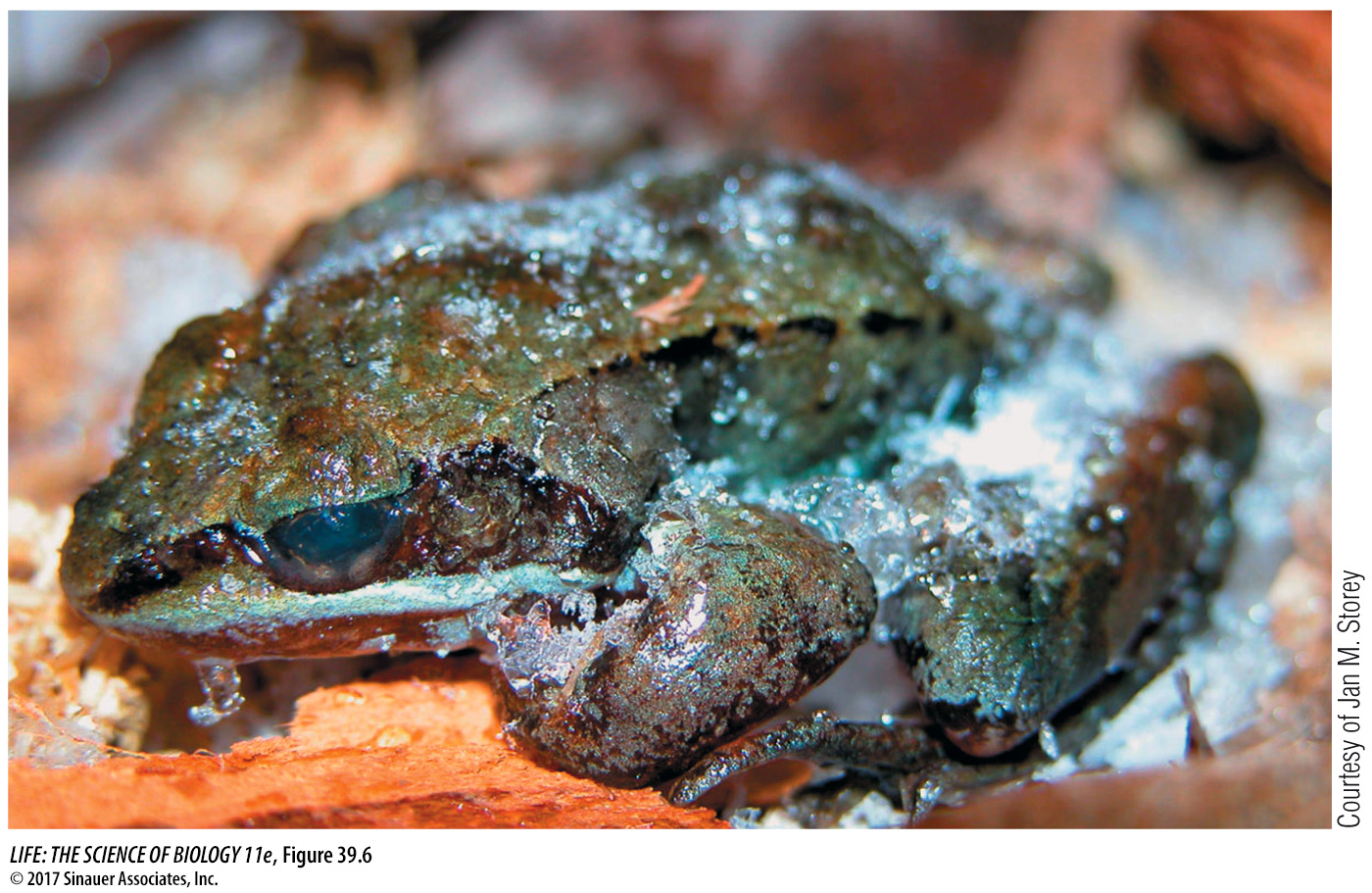Temperature affects living systems
If cells cool below the freezing point of their body fluids, ice crystals form and damage cell structures. Some animals have adaptations, such as antifreeze molecules in their blood that help them resist freezing; others can survive freezing (Figure 39.6). Generally, however, cells must remain above freezing to stay alive. The upper temperature limit for survival in most cells is about 45°C because of protein denaturation. Some specialized algae, however, can grow in hot springs at 70°C, and some archaea live at near 100°C.

Figure 39.6 Frozen Frogs Wood frogs (Rana sylvatica) live in the northeastern United States, across most of Canada, and up into northern Alaska. They freeze solid in the winter and survive. During the fall and early winter, urea and glucose accumulate in the frogs’ cells and act as intracellular cryoprotectants (like antifreeze in your car radiator). Also, much intracellular water is redistributed to the extracellular fluid, which can freeze without damaging cells.
*connect the concepts Protein denaturation by heat is due to effects on secondary and tertiary structure of the protein as described in Key Concept 3.2.
Although the survival limits for most cells fall in the range of 0°C–40°C, most species have much narrower thermal limits for optimal function. To stay within those limits in spite of environmental conditions, animals have thermoregulatory adaptations that enable them to tolerate extreme conditions or to control their body temperature in spite of environmental conditions. These adaptations may determine the thermal tolerances of species and thereby determine their geographic ranges. When environments change rapidly, as is happening globally at present, animals may find themselves in situations that exceed their thermal tolerances. A good example is the reef-building corals discussed in the opening of Chapter 1.
